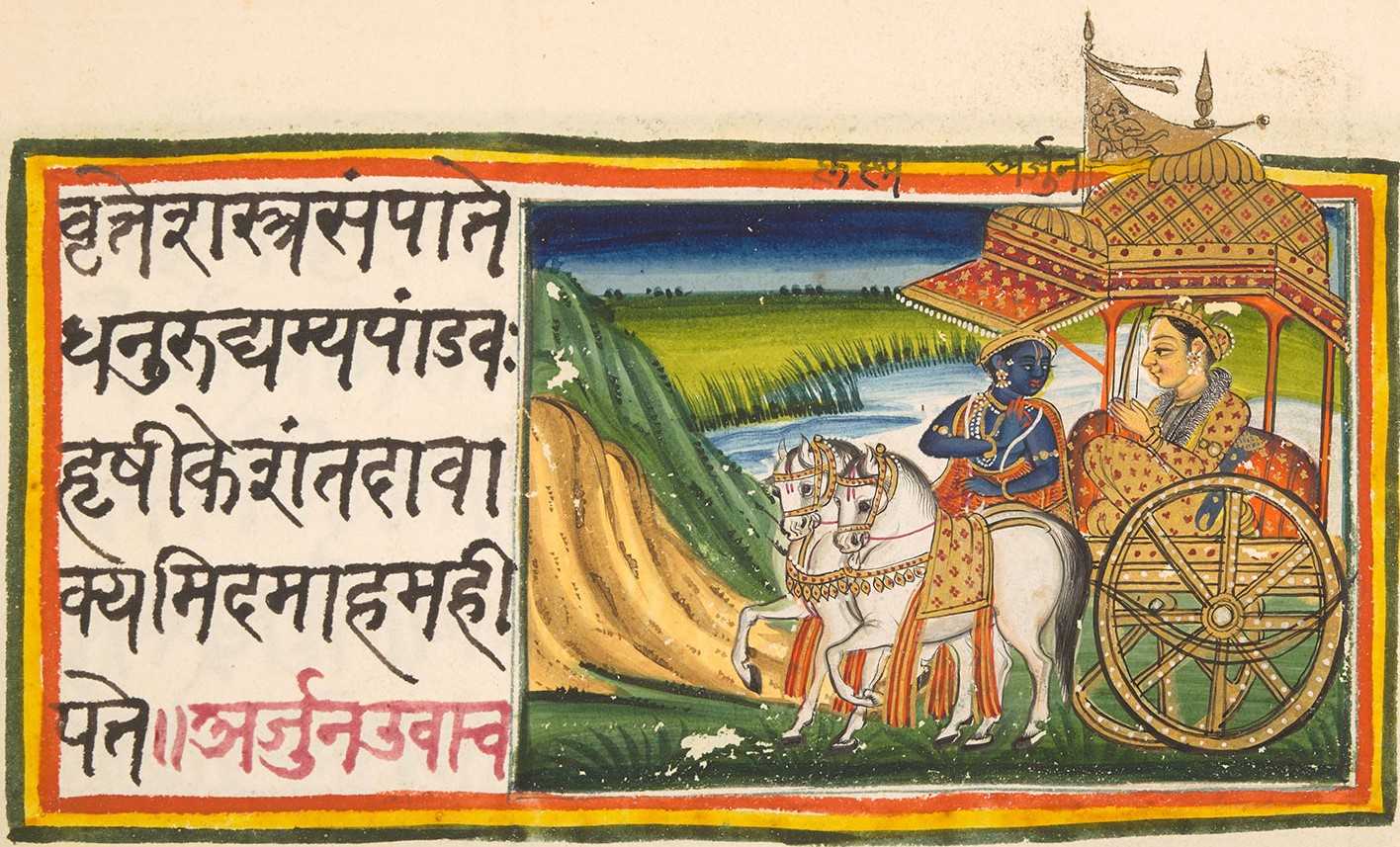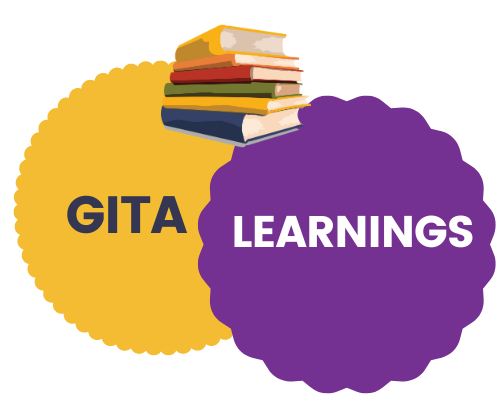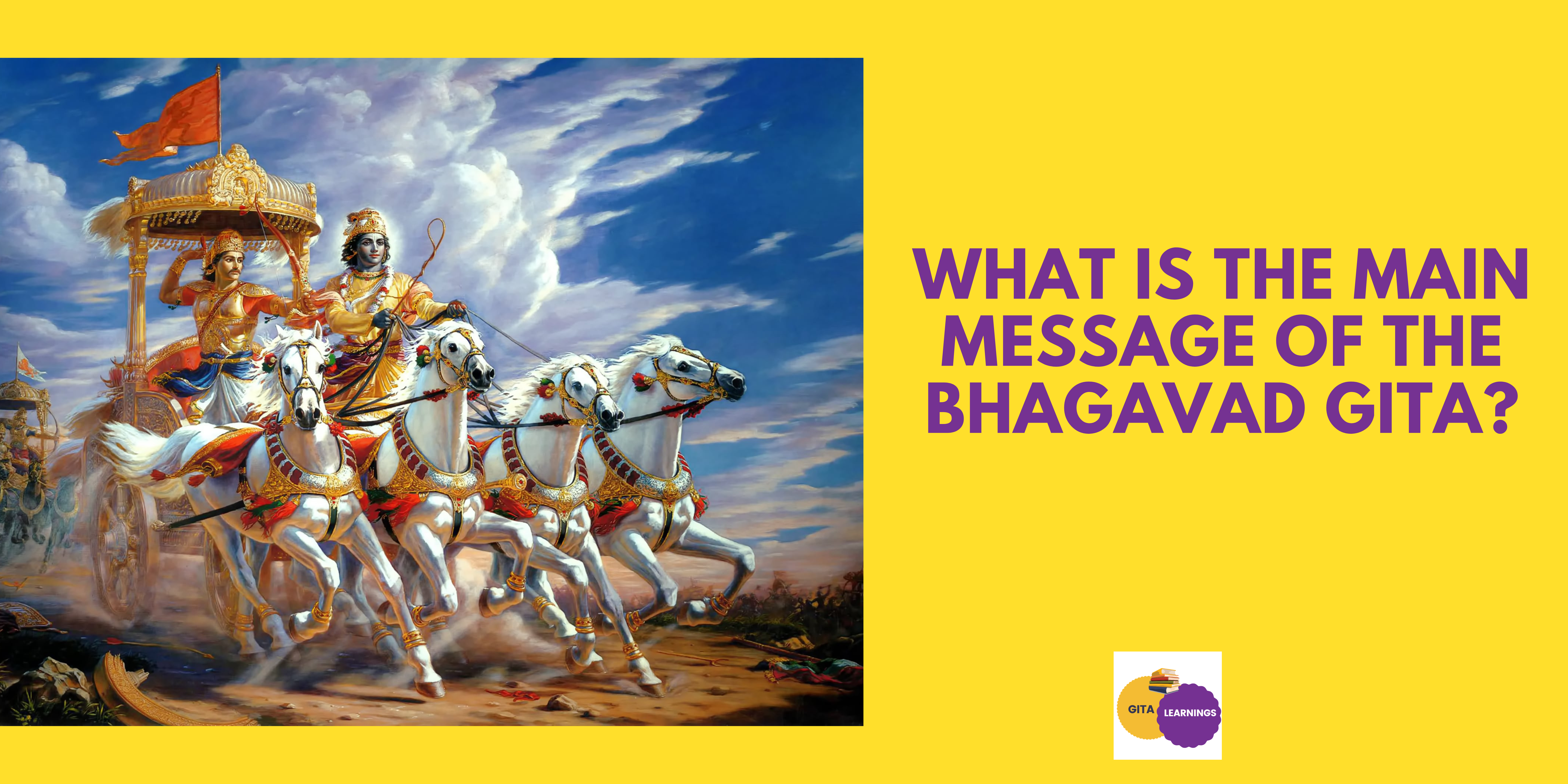The Bhagavad Gita, a sacred scripture of Hindu philosophy, holds a profound message that has transcended time and continues to inspire countless individuals around the world. Nestled within the Indian epic Mahabharata, the Gita presents a discourse between Lord Krishna and the warrior prince Arjuna on the battlefield of Kurukshetra. At its heart, the Bhagavad Gita conveys essential teachings that touch upon the essence of life, duty, and spirituality. In this blog, we are going to share a Bhagavad Gita Summary for you to understand the main message of Gita teachings.
Imagine yourself on the cusp of a great battle, burdened by dilemmas and uncertainties. The Bhagavad Gita unfolds on the battlefield of Kurukshetra, where Prince Arjuna grapples with moral and emotional conflicts. This setting mirrors our own internal battles—the struggles we face in understanding our purpose and making life-altering decisions.

The Essence of Dharma
Understanding Duty (Dharma) – The Key to Fulfillment
In the Bhagavad Gita, the concept of dharma emerges as a central theme. Arjuna, burdened by a moral dilemma, is reluctant to fight in the battle. Krishna elucidates that performing one’s duty, or dharma, is essential for the cosmic order and the well-being of society. This resonates with the idea that each individual must fulfill their responsibilities to maintain harmony in the world.
The Pathways to Spiritual Liberation
Karma Yoga – Selfless Action as a Pathway
The Gita introduces Karma Yoga, the practice of selfless action. By performing duties without attachment to the outcomes, individuals can transcend the cycle of karma and attain spiritual liberation. This philosophy underlines the importance of detachment and dedication to the greater good. The Gita advocates for selfless action, teaching us to focus on the process rather than the outcome.
Bhakti Yoga – The Path of Devotion
Krishna emphasizes Bhakti Yoga, the path of devotion, which involves surrendering to a higher power. Through unwavering devotion, individuals can experience unity with the divine. This concept instills the idea of placing trust in a higher force while nurturing a profound spiritual connection.
Jnana Yoga – The Pursuit of Knowledge
Jnana Yoga, the pursuit of knowledge, offers seekers a way to understand the true nature of reality. By discerning between the transient and the eternal, individuals can achieve enlightenment. This pathway underscores the importance of wisdom and discernment in leading a meaningful life.
Read More - 12 Quotes by Lord Krishna That Are Still Relevant in 2023
Overcoming Challenges and Inner Struggles
Facing Doubt and Despair
Arjuna’s initial hesitation to fight symbolizes the inner conflicts that often arise within individuals. Krishna’s counsel encourages Arjuna to overcome his doubts and fears. This resonates with the idea that confronting one’s inner struggles is essential for personal growth and transformation.
The Battle Within
The battle on Kurukshetra serves as a metaphor for the inner conflict between one’s higher self and ego. The Gita teaches that conquering one’s inner battles is the first step toward self-realization and spiritual elevation.
The Universality of the Gita’s Message
Beyond Religious Boundaries
While deeply rooted in Hindu philosophy, the Bhagavad Gita transcends religious boundaries. Its teachings resonate with seekers from diverse backgrounds, offering universal wisdom that applies to the human experience as a whole.
Relevance in Modern Times
The Gita’s teachings continue to be relevant in today’s fast-paced world. Its emphasis on ethical behavior, selflessness, and mindfulness provides guidance for navigating contemporary challenges.
Conclusion
In the Bhagavad Gita, the main message is a call to self-realization, duty, and spiritual growth. Gita’s teachings guide individuals to lead a life of purpose, virtue, and wisdom. Through its timeless wisdom, the Gita remains an unwavering source of inspiration, offering solace and guidance to those seeking a deeper understanding of existence.
Embarking on a journey through the Bhagavad Gita Summary reveals a roadmap to lead a meaningful and purposeful life. Its teachings provide solace, guidance, and enlightenment, making it a timeless spiritual guide for humanity. As we apply its lessons in our lives, we unlock the potential for personal growth and the realization of our true selves.
FAQs
Q1: What is the Bhagavad Gita’s central message?
A1: The Bhagavad Gita’s core message is about fulfilling one’s duty, selfless action, devotion, pursuit of knowledge, and transcending mortal limitations to attain spiritual liberation.
Q2: How does the Gita apply to modern life?
A2: Gita’s teachings remain relevant by guiding us through life’s challenges, fostering ethical behavior, and encouraging self-discovery.
Q3: Is the Bhagavad Gita religiously exclusive?
A3: No, Gita’s teachings transcend religious boundaries and offer universal wisdom applicable to people of all beliefs.
Q4: Can one practice multiple paths mentioned in the Gita?
A4: Yes, the Gita acknowledges that individuals have unique inclinations; hence, one can blend paths like Karma Yoga, Bhakti Yoga, and Jnana Yoga based on their nature.
Q5: How can I start applying Gita’s teachings in my life?
A5: Begin by understanding your duties and performing them selflessly. Cultivate devotion and seek knowledge to explore the deeper dimensions of existence.

